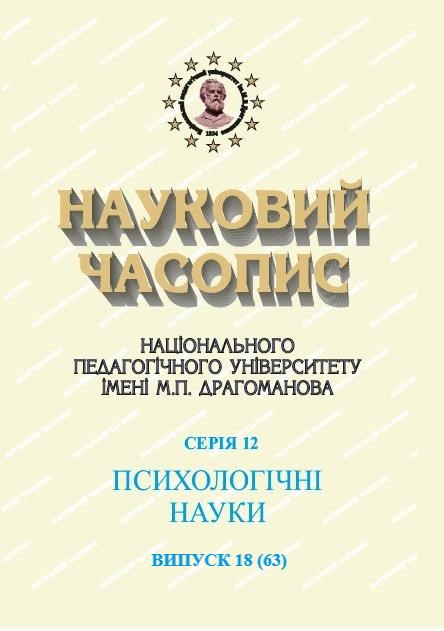SPECIFICITY OF PERSONALITY VALUE ORIENTATION STRUCTURE IN CONDITIONS OF UNCERTAINTY
DOI:
https://doi.org/10.31392/NPU-nc.series12.2021.18(63).03Keywords:
цінності, прагнення, структура життєвих прагнень, ситуація невизначеності, психологічне здоров’я, студентська молодь.Abstract
Objective. The article highlights the results of the empirical study of the individuality value orientation structure in conditions of uncertainty and establishing their links with mental health and personal interaction styles. Results. A two-factor structure of life aspirations as a form of life values of young people is established, that is extrapsychic and intrapsychic factors. Intrapsychic aspirations are the values which include an assessment of the importance of aspirations for personal growth and service to society. They are associated with the satisfaction of basic psychological needs. Extrapsychic aspirations/values include those of material success, physical attractiveness and popularity, and are external indicators of well-being that are directly related to the psychological needs of growth and development. Extrapsychic aspirations/values are assessed by the students as less important if compared to intrapsychic ones. The fact that the values of health and involvement have approximately the same factor weights in both groups shows that for Ukrainian youth these two values make sense both as factors of personal development and factors of apparent well-being. Conclusions. The information obtained on the connection of aspirations/values with mental students’ health states the presence of a pattern that allows to overcome the situation of uncertainty: the stronger a person is focused on intrapsychic aspirations/values compared to extrapsychic ones, the better psychological health they have and, on the contrary, the higher they assess the importance of extrapsychic aspirations/values in comparison with intrapsychic ones, the worse the indicators of psychological health and well-being they have. The relationship between university teachers’ communication style and students’ aspirations for values is as follows: the more students evaluate their teachers as those who support and respect their independence and are involved in their values, the more significant their relative focus on intrapsychic aspirations is. Prospects for further research are to continue studying the fact that the relationships with university professors are connected to aspirations and values, and the relationships with parents are not.
References
- Gornostaj, P.P. (2002). Zhyttyevi roli ta zhyttyetvorchist [Life roles and life creativity]. Naukovi studiyi z socialnoyi ta polity chnoyi psychologiyi - Scientific studies and political psychology, 5, 81–91 [in Ukrainian].
- Gusev, A.I. (2007). Do problem vymiru tolerantnosti do nevyznachenosti [On the problem of measuring uncertainty tolerance]. Praktychna psykholohiia ta sotsialna robota – Practical psychology and social work, 8, 75–80 [in Ukrainian].
- Yamnytskyi, (2009). Systemnyi analiz fenomena zhyttietvorchosti osobystosti [Systemic analysis of the phenomenon of personal creativity]. Psykholohiia i suspilstvo – Psychology and society, 4, 145–152 [in Ukrainian].
- Deci,L., & Ryan, R.M. (1985). Intrinsic motivation and self-determination in human behavior. New York : Plenum.
- Kasser, T., & Ryan, R.M. (1993). A dark side of the American dream: Correlates of financial success as a central life aspiration. Social Psycholоgy, 65, 410–422.
- Melnychuk, S., Kurova, A., Shvetsova, I., Shcherbakova, O., Tsilmak, O. M., & Luts, L. (2021). Theoretical fundamentals of study of values and value orientations in management of psychological scientific space. Journal of management Information and Decision Sciences, 24(2), 1–6. Retrieved from https://www.abacademies.org/articles/theoretical-fundamentals-of-study-of-values-and-value-orientations-in-management-of-psychological-scientific-space-10119.html
- Jones,, & Crandal, R. (1986). Validation of a short index of self-actualization. Personal Social Psycholоgy Bulletin, 12, 63–73. https://doi.org/10.1177/0146167286121007

